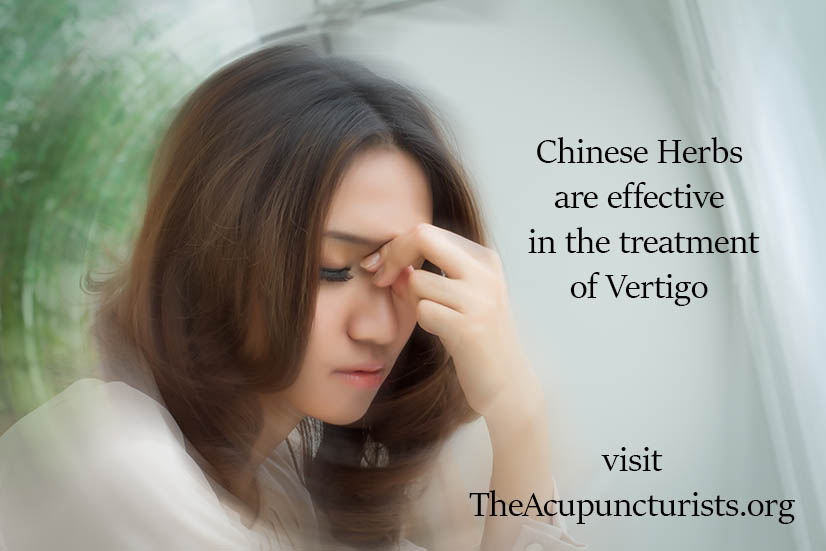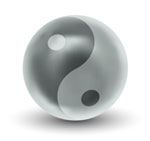
Coral Springs, Fl – Sufferers describe vertigo being unbalanced, watching the room spin around them. One of the most common causes is referred to as “BPPV,” which stands for “benign paroxysmal positional vertigo.” BBPV occurs when tiny calcium particles fill the canals of the inner ear. Unfortunately, BPPV can occur out of nowhere. There are no symptoms or signs to forewarn an attack. While it is usually associated with aging, anyone at any given time can suffer a vertigo attack.
Conventional medicine usually recommends the “Eply Maneuver” for treatment. This procedure involves repositioning the patients’ head so that their inner ear clears. For some, one Eply Maneuver is enough; for others, multiple sessions may be needed. The “Eply Maneuver” is performed by various Western health care professionals such as medical doctors, chiropractors and physical therapists. Some patients are not fans; the Eply Maneuver can cause extreme nausea or even vomiting in some.
Increasingly, a technique known as the “1/2 somersault” is becoming more and more popular to self-treat vertigo. This procedure, as demonstrated on Youtube, teaches a person to move their head to clear their ear canal and restore balance. It is quick and effective, allowing suffers to directly treat their affliction and eliminating much of the nausea experienced by individuals with the Eply Maneuver.
The causes of vertigo is unknown. However, general practitioners believe that it’s possibly related to hypertension, hypotension, Meniere’s disease and cervical spine dysfunction. Vertigo is one of those diseases like tinnitus: the Western world has identified it, identified the causes but cannot “cure” it or predict when it will occur. The best a sufferer can have is the knowledge on how to self-treat, and when to know it is time to see a professional.
For many, the unpredictability of an attack has led them to explore complimentary health care options. Acupuncture and Chinese Herbs have had great success in both treating and preventing vertigo attacks.
Traditional Chinese Medicine (TCM) theory for Vertigo
Vertigo was first recorded in the classical TCM book Huang Di Nei Jing which was written 2000 years ago. In this book, it refers vertigo as “xuan mao”, translated as “dizziness.” The text states: “All the syndromes of trembling and dizziness caused by the wind evil are pertaining to the liver”; “when the sea of marrow is insufficient, one’s brain will feel like turning and he will have the syndromes of tinnitus, sore legs, dizziness, poor vision, slothful and sleepiness.”
Dr. Zhang Zhong Jing in the Han dynasty had a different point of view. He believed that vertigo is caused by “phlegm damp at the epigastria region”. In the Ming dynasty, Dr. Zhu Danxi detailed summer heat and phlegm as a cause of dizziness. According to him, dizziness is caused by phlegm above with fire below. The phlegm floats upward with the fire, causing dizziness and vertigo accompanied by nausea. With his experience, he created a famous formula called Liu Jun Zi Tang, which was a combination of Er Chen Tang and Si Jun Zi Tang, effectively treated Qi-deficiency type of dizziness with phlegm retention.
In TCM, the head is the orifice where all the clear Yang energy gathers, and it’s vulnerable to attack by the “wind” evil. The nature of wind is to stir and move, thus causing one’s dizziness. Another common cause of vertigo is in a person with a deficient constitution, when poor nourishment to the head causes clear Yang energy to fail to ascend, and turbid water gets stuck at the inner ear cavity. Generally, liver, spleen and kidney are the three major organs closely associated with vertigo.
TCM Syndrome Differentiation and treatments in Vertigo
I have listed the 5 most common patterns that give rise to vertigo along with acupuncture points and herbal prescriptions typically used. Vertigo can be further divided into the following five patterns or groups:
Liver Yang Rising 肝阳上亢. – Liver and kidney Yin deficiency and fail to anchor the liver Yang, causing liver Yang to blaze upward. Also, blockage of liver Qi can transform the Qi into Fire and lead to stirring of wind. In all these conditions, liver Yang can ascend and disturb the upper. Signs and symptoms: dizziness, tinnitus with a distended headache, bitter taste, worse anger, stress or exertion. The person is irritable with a red complexion, dream-disturbed sleep and insomnia. In conventional medicine, this matches the classical symptoms of hypertension.
- Acupuncture points: LV2, KD 3, BL 23, BL 18, GB 20, Du 20, and LI 11.
- Herbal formulas: Tian Ma Gou Teng Yin 天麻钩藤饮 and Zhen Gan Xi Feng Tang 镇肝息风汤. In severe dizziness, Shi Jue Ming, Long Gu and Mu Li can be added. Gou Teng, Uncaria rhyschophylla, contains the compounds corynoxeine and isocorynoxeine which are powerful anti-convulsive and antispasmodics. In the experiments with animals, this herb was observed to antagonize caffeine and reduce cortical excitation, as well as acting as calcium and potassium channel-blocker, which is similar to anti-hypertension medications.
Phlegm-damp Obstruction 痰湿中阻 – Deficiency of spleen and poor diet are the causes of the phlegm and damp retention in the GI system. Signs and symptoms: dizziness, heaviness and cloudiness, stuffiness in the chest accompany with nausea, vomit with clear fluid, and lack of appetite.
- Acupuncture points: ST40, RN 12, SP 9, SP 3, BL20, and PC 6.
- Herbal formulas: Ban Xia Bai Zhu Tian Ma Tang 半夏白术天麻汤 plus Er Chen Tang 二陈汤. For heaviness and cloudiness in the head, add Shi Cang Pu and Yuan Zhi .
Qi and Blood Deficiency 气虚两虚证 – Qi deficiency leads to impaired distribution of Yang Qi to the brain; blood deficiency causes poor nourishment to the brain. Both induce dizziness. In conventional medicine, patient with Qi and blood deficiency usually diagnosis with anemia and hypotension. Signs and symptoms: dizziness aggravated by exertion, fatigue, pale complexion, poor appetite, bloating, palpitation and insomnia.
- Acupuncture points: ST 36, SP 3, RN 6 and RN 4, BL 20, DU 20.
- Herbal formulas: Gui Pi Tang 归脾汤 plus Yi Qi Cong Ming Tang 益气聪明汤. These two herbal formulas combined treat superficial visual obstructions, cloudy vision, diminished visual acuity, tinnitus, dizziness and vertigo very effectively
Kidney Essence Deficiency 肾精亏虚 – The kidney is the mansion of storing essence, the so called “recharge station for life’s battery.” If prenatal heredity is inadequate, and chronic illness or aging consumes kidney essence, kidney essence can become deficient. The Sea of Marrow, which includes the brain, becomes depleted and the brain loses nourishment. Vertigo ensues. Signs and symptoms: dizziness, lethargy, weak lower back and knees, insomnia, poor memory, poor vision, tinnitus and loose teeth; low libido, dry mouth and hot flashes, aversion to cold and pale complexion.
- Acupuncture points: KD 3, KD 7, Bl 23, RN 4, RN 6, DU 20.
- Herbal formulas: Wu Zi Yan Zong Wan 五子衍宗丸. – this formula contains the following powerfl Chinese herbs – Gou Qi Zi (Barbary Wolfberry Fruit Fructus Lycii ), Tu Si Zi (Dodder Seed Semen Cuscutae), Fu Pen Zi (Palmleaf Raspberry Pruit Fructus Rubi), Wu Wei Zi (Chinese Magnolivine Fruit Fructus Schisandrae), and Che Qian Zi (Plantago Seed Semen Plantaginis. This formula enhances kidney essence. In Traditional Chinese Medicine (TCM), the kidney is the source of Yin, Yang, and Jing. Wu Zi Yan Zong Wan is indicated in China Pharmacopoeia1 for tonifying the kidney and nourishing Jing. It is used for the kidney vacuity and lower back pain, dribbling in urination, nocturnal emission, premature ejaculation, erectile dysfunction, vertigo and infertility.
Blood Stasis 淤血阻窍 – Blood Stasis – induces vertigo usually due to head trauma. Blood clots interfere with the Qi and blood circulation in the head. Signs and symptoms: dizziness, headache with fix location, poor memory, restless sleep, tinnitus, dark complexion and lips.
- Acupuncture points: LV 3, LI 4, SP6, BL 17, BL18, Ashi Points.
- Herbal formula: Tong Qiao Huo Xue Tang 通窍活血汤 – this formula quickens blood, dispels stasis and can free any obstructions in the head that give rise to headache, dizziness, tinnitus, vertigo and hair loss. It is also used for migraines and/or headaches with other sensory factors – auras, sound sensitivity, etc.
Conclusion
Traditional Chinese Medicine does not generalize vertigo as one particular syndrome. Instead, it aims to treat the specific symptoms that are unique to each individual using a variety of techniques such as acupuncture, Chinese herbs, Tui Na massage, and energetic exercises to restore balance to the body. While carefully examining a patient’s current clinical presentation, we take account of patient’s medical history, dietary habits and emotional state. Based on the comprehensive TCM diagnosis, treatment plans address not only the signs and symptoms of the vertigo to give the patient immediate relief, but aim for the root, that is, for the long-term elimination of the disease to prevent its recurrence.
The Acupuncturists serve the communities of Margate, Coconut Creek, Coral Springs, Tamarac, Parkland, Deerfield Beach, West Boca. If you are suffering with vertigo we believe we can help. Call to schedule an appointment today.
Learn how acupuncture can effectively treat vertigo
References:
- 周肿瑛, 中医内科学,中国中医药出版社,2007
- Armm, Brendan. “Oriental Medicine and Migraines.” Acupuncture Today – The Leading Provider of Acupuncture and Traditional Chinese Medicine News and Research Information in the World – TCM – Find an Acupuncturist, 1 Sept. 2007, www.acupuncturetoday.com/mpacms/at/article.php?id=31573.
- Frank, Cara. “The Treatment of Vertigo And Meniere’s Disease with TCM.” Six Fishes Healing Arts, 25 June 2015, sixfishes.com/learn/edu/the-treatment-of-vertigo-and-meniere-s-disease-with-tcm.
- Huang, Kee Chang. The Pharmacology of Chinese Herbs. 2nd Edition ed., CRC Press, 1999.
- Levy, Jillian. “How to Get Rid of Vertigo.” Dr. Axe, Dr. Axe, 30 Dec. 2015, draxe.com/how-to-get-rid-of-vertigo/
- “Migraine.” Mayo Clinic, Mayo Foundation for Medical Education and Research, 31 May 2018
